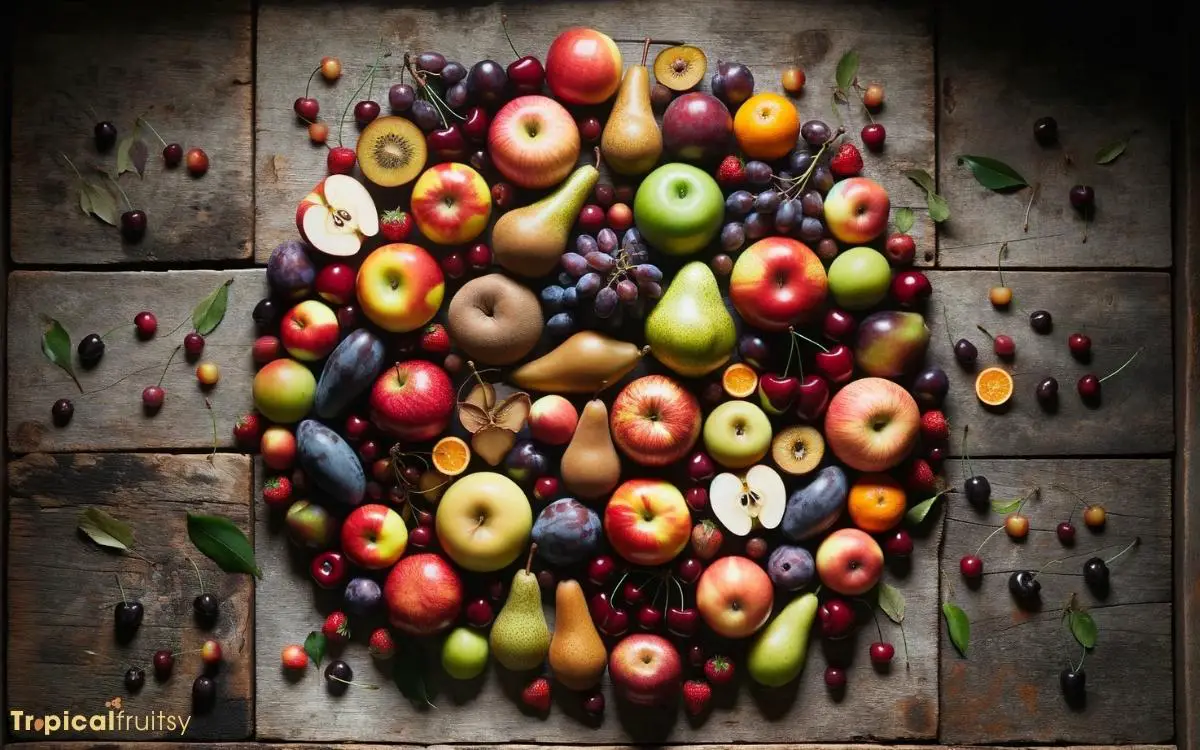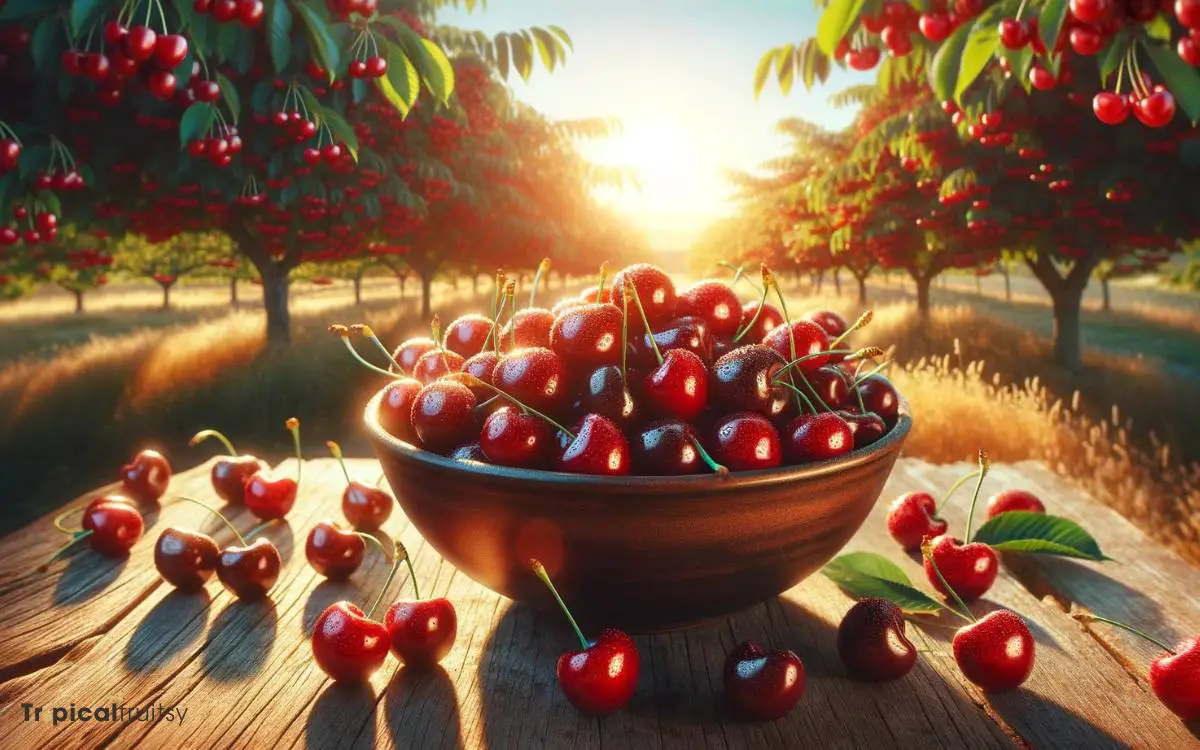List of Non Tropical Fruits: A Flavorful Guide!
Non-tropical fruits encompass a wide array of delicious and nutritious options grown primarily in temperate regions.
These fruits include apples, berries, stone fruits like peaches and plums, and citrus fruits such as oranges and lemons.
They are celebrated for their distinct flavors, health benefits, and versatility in cooking and baking.
Non-tropical fruits are cultivated in areas with moderate climates and do not thrive in the hot, humid conditions typical of the tropics.
Here are some key characteristics:
Discover the wholesome goodness of non-tropical fruits, from the orchard-fresh apple to the zesty lemon.

Key Takeaway
Comparison of Common Non-Tropical Fruits: Seasonality, Health Benefits, and Culinary Uses
| Common Non-Tropical Fruits | Season | Primary Health Benefits | Culinary Uses |
|---|---|---|---|
| Apples | Fall | Fiber, Vitamin C | Pies, sauces, fresh eating |
| Berries (e.g., Blueberries) | Summer | Antioxidants, Vitamin C | Smoothies, desserts, salads |
| Stone Fruits (e.g., Peaches) | Summer | Vitamins A and C, Fiber | Baking, grilling, fresh eating |
| Citrus Fruits (e.g., Oranges) | Winter | Vitamin C, Potassium | Juices, dressings, garnishes |
Apples: A Crisp Delight

The apple’s reputation as a crisp, versatile fruit cements its status as a staple in non-tropical produce selections.
Cultivated globally, Malus domestica exhibits remarkable genetic diversity, enabling its cultivation in varied climates.
Apples thrive in temperate regions, requiring specific chilling periods for optimal development, a process termed vernalization.
Post-harvest, apples maintain a high degree of firmness and flavor integrity, attributable to their cell structure and the presence of natural preservatives like ascorbic acid.
Nutritionally, apples offer dietary fiber, vitamin C, and various phytochemicals, contributing to their recognition as a component of a healthful diet.
The apple’s enduring popularity is further sustained by its adaptability, finding utility in culinary contexts from raw consumption to complex gastronomic preparations.
Now, let us transition to cherries: summer’s sweet gems, which embody a distinct seasonal delight.
Cherries: Summer’s Sweet Gems

Several varieties of cherries, celebrated for their sweet and tart flavors, flourish in temperate climates and peak during the summer months.
While sweet cherries (Prunus avium) such as Bing and Rainier are widely consumed fresh, tart or sour cherries (Prunus cerasus) like Montmorency are often processed for culinary uses.
Cherries are drupes, or stone fruits, characterized by a single hard seed encased within a fleshy exterior.
Horticulturally, they require well-drained, fertile soils and are susceptible to climatic challenges, including late frosts and excessive rainfall, which can affect crop yield.
The harvest period is relatively brief, necessitating efficient picking and handling to preserve quality.
Packed with antioxidants, cherries offer health benefits, including anti-inflammatory properties and melatonin, which aids sleep regulation.
Berries: Versatile and Nutritious

Moving on to berries, this diverse category includes popular types like strawberries, blueberries, and raspberries. These berries are not only enjoyed for their vibrant flavors but are also packed with essential nutrients.
Berries are a rich source of vitamins, particularly vitamin C and K, and are high in fiber and antioxidants. These compounds, such as anthocyanins and flavonoids, contribute to their distinct colors and are linked to a myriad of health benefits.
These benefits include reducing inflammation, protecting against cardiovascular disease, and certain cancers.
Moreover, their low glycemic index makes them suitable for diabetic diets, and their phytonutrient content supports overall health. With their versatile use in culinary applications, berries are a valuable addition to any diet.
Next, we will explore stone fruits: juicy and flavorful.
Stone Fruits: Juicy and Flavorful

Why are stone fruits an essential part of non-tropical fruit assortments?
Stone fruits, named for their hard endocarp within which the seed resides, offer a unique combination of juicy flesh and bold flavors that are coveted in culinary applications.
These fruits, including peaches, nectarines, plums, cherries, and apricots, exhibit a dynamic range of acidity and sweetness, essential for creating balanced dishes.
Their textural diversity, from the velvet softness of a ripe peach to the firm snap of a cherry, allows for varied gastronomic uses.
Stone fruits are rich in vitamins, antioxidants, and dietary fiber, contributing to their nutritional value.
Furthermore, these drupes have a seasonal presence that excites consumer markets, as their availability often signals the transition from spring to summer, adding to their consumer appeal.
Are Tropical Fruit Gushers Considered as Non-Tropical Fruits?
Tropical fruit Gushers flavors explore an array of exotic fruit varieties, making them a popular choice for those seeking a taste of the tropics. While the candies themselves may not be actual tropical fruits, their flavors certainly transport consumers to a tropical state of mind.
Citrus Varieties: Zesty and Refreshing

Among the plethora of non-tropical fruits, citrus varieties stand out for their vibrant flavors and aromatic zest, which invigorate a wide array of culinary creations.
These fruits are not only lauded for their gustatory appeal but also for their high vitamin C content, essential oils, and numerous phytochemicals beneficial for health.
Citrus fruits are characterized by their hesperidium, a specialized type of berry with a tough, leathery rind and segmented flesh.
To engage the audience further, below is a table delineating a selection of citrus fruits along with their typical uses:
| Citrus Variety | Typical Use |
|---|---|
| Orange | Juice, Snacks |
| Lemon | Seasoning, Beverages |
| Lime | Cocktails, Flavoring |
| Grapefruit | Breakfast, Salads |
| Tangerine | Desserts, Snacks |
These citrus fruits offer a spectrum of flavors ranging from the sweet and mildly tangy tangerines to the bold and somewhat bitter grapefruit, catering to diverse palates and culinary requirements.
Conclusion
The diverse array of non-tropical fruits offers a cornucopia of gustatory pleasures, each with its unique nutritional profile.
Apples provide a crisp, fibrous bite, while cherries burst with sweetness. Berries offer a plethora of health benefits alongside their culinary versatility.
Stone fruits entice with their succulent textures, and citrus fruits invigorate the senses with their vibrant zest.
These fruits, far from the equator’s embrace, enrich diets and tantalize palates with their varied, non-tropical bounty.






